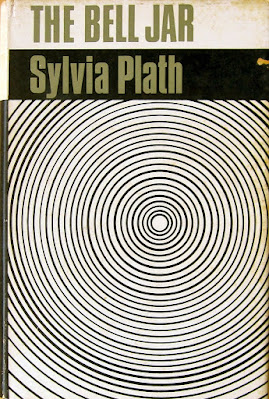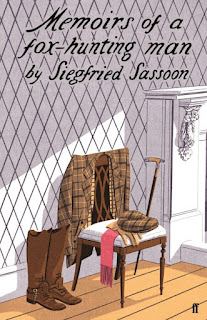A World Turned Upside Down
In The Bell Jar, Sylvia Plath studies the processes of depression. The narrator, Esther Greenwood, and her sense of identity are both in jeopardy, and the novel traces her decline from false happiness to the deepest recesses of mental illness. It is a story both beautifully and masterfully told, giving voice to a young woman’s experience of a world turned upside down.
Immediately, Plath’s narrator admits to a hard truth: her life is at an uncomfortable impasse. ‘I didn’t know what I was doing in New York,’ she confesses. ‘I was supposed to be having the time of my life. [. . .] I guess I should have been excited the way most of the girls were, but I couldn’t get myself to react’ (1-2). Experiencing a deep sense of estrangement from the world around her, Plath’s narrator faces a perennial struggle between her inner and outer self. How she truly feels counteracts how others expect her to feel, act, and behave.
The novel’s centremost idée fixe is the fall and decline of Esther’s personality. A recurring image favours diminishment. In chapter two, Esther and a friend head off to a man’s apartment, and Esther plays the third wheel, dreaming of other things.
I never feel so much myself as when I’m in a hot bath. [. . .] Doreen is dissolving, Lenny Shepherd is dissolving, New York is dissolving, they are all dissolving away and none of them matter any more. I don’t know them, I have never known them and I am very pure. (19)
Her thoughts turn towards negation, a mild obsession. Earlier, she states: ‘I felt myself melting into the shadows like the negative of a person I’d never seen before in my life’ (9). She is witnessing the drift of her identity – the internal fracturing process which breaks her sense of self.
Later, Esther is unable to trust her senses. After undergoing electro-shock treatment, she relates her experience to a past trauma, when ‘I screamed, or a scream was torn from my throat, for I didn’t recognize it, but heard it soar and quaver in the air like a violently disembodied spirit’ (139). She fails to recognise her own voice, further distancing her body’s reactions away from her mental perceptions.
The novel’s bell jar motif pushes these ideas forward. Esther first mentions the jar during a move from one hospital to a private firm. A sympathetic patron (who Esther’s mother has contacted) decides to fund Esther’s treatment. They are in a black Cadillac ‘easing through the tight five o’clock traffic like a ceremonial car’, when Esther considers her feelings (177).
I knew I should be grateful to Mrs Guinea [the patron], only I couldn’t feel a thing. If Mrs Guinea had given me a ticket to Europe, or a round-the-world cruise, it wouldn’t have made one scrap of difference to me, because wherever I sat . . . I would be sitting under the same glass bell jar, stewing in my own sour air. (178)
A glass bell jar curves and reshapes one’s vision, and Esther’s jar is a metaphor for her warped sense of reality, translating what it feels like to live with mental illness. The bell jar motif gives rise to an embedded argument – that Esther’s illness is something separate from herself. The bell jar symbolises her illness and falls over her head, altering her vision and distorting all her future perceptions of the world.
Consequently during her recovery, Esther rises from the bell jar’s stranglehold. ‘I felt surprisingly at peace,’ she says. ‘The bell jar hung, suspended, a few feet above my head. I was open to the circulating air’ (206). Her sense of release – her life’s transition from ‘sour’ to ‘circulating air’ – fortifies the reader’s conception of how suffocating her experiences have been.
In terms of what causes Esther’s depression, societal expectations damage Esther’s self-esteem. When discussing academic aspirations, she questions the place of a stable work ethic. ‘All my life I’d told myself studying and reading and writing and working like mad was what I wanted to do . . . and by the time I made it to college nobody could stop me’ (29). Suddenly she fails the entrance requirements for a creative writing course; shame and guilt build up into a brooding sense of personal failure. This is not Esther’s fault – chiefly, it is the ideals and pre-expectations of success which cause Esther’s pain, spurring an obsessively self-critical mindset. The social-cultural system she comes from prevents her from ever being happy.
These sections offer Plath a space to formulate a feminist critique of mid-twentieth century American society, particularly in regard to what makes a ‘successful’ woman. Esther’s narrative confronts male ideas of womanly behaviour and womanly actions. Her on-again off-again boyfriend, Buddy Willard, proposes his hand in marriage. But Esther refuses. She will never get married, she says, because the idea seems to threaten and curtail her freedom; she suspects that Buddy secretly want to ‘flatten [her] underneath his feet like Mrs Willard’s kitchen mat’ (80). For Esther, men represent control. At one point, she tells a psychiatrist:
What I hate is the thought of being under a man’s thumb [. . .] A man doesn’t have a worry in the world, while I’ve got a baby hanging over my head like a big stick to keep me in line. (212)
The threat of male dominance is toxic, amplifying Esther’s misery, destroying the integrity of her womanhood. Plath’s narrator questions long-standing patriarchal attitudes towards womanly behaviour. In so doing she recovers fragments of her past identity, a young woman who was once autonomous and free-thinking.
One question Esther observes concerns the place of sex in her relationship with Buddy, who claims he has had many partners before Esther. His words adversely affect Esther’s emotions, and she thus internally attacks herself for falling short of Buddy’s standards. After reading a woman’s magazine, which claims the benefits of female chastity (!), Esther rivals its argument.
Now the one thing this
article didn’t seem to me to consider was how a girl felt.
It might be nice to be pure and then to marry a pure man, but what if he suddenly confessed he wasn’t pure after we were married, the way Buddy Willard had? I couldn’t stand the idea of a woman having to have a single pure life and a man being able to have a double life, one pure and one not. (77)
Esther is confronting the double standard in society (i.e. a social principle that patriarchal ideology applies unfairly to women). Plath is calling on her readers to challenge these male-centric viewpoints, appealing to others to make positive changes in the face of such discrimination, thereby making the case that such a change might end up saving somebody’s life.
Source:
The Bell Jar. By Sylvia Plath. London: Faber & Faber, 2005. 978-0-571-22616-0.
 |
| The Bell Jar by Sylvia Plath 1966 |


Comments
Post a Comment